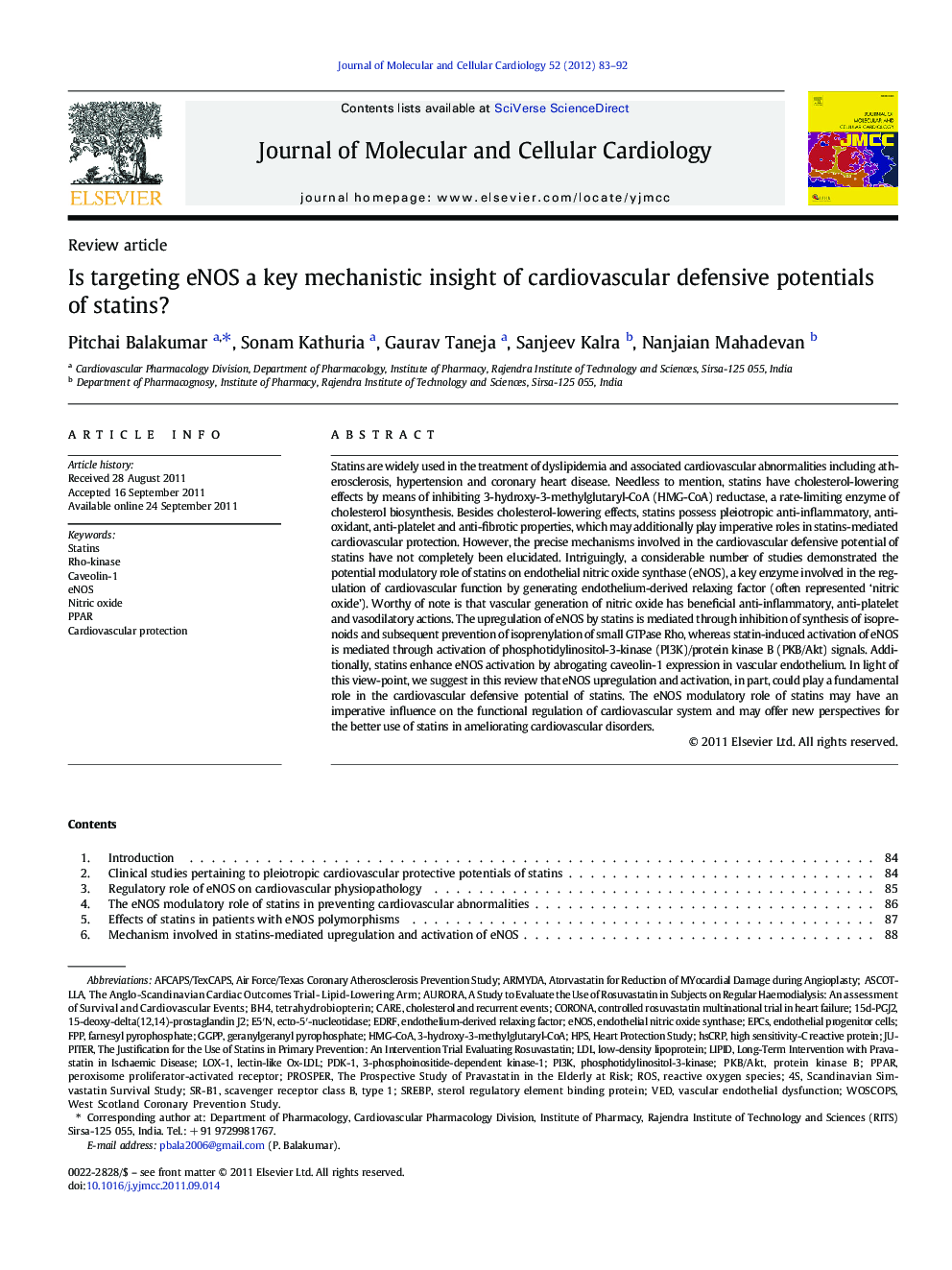| Article ID | Journal | Published Year | Pages | File Type |
|---|---|---|---|---|
| 10953821 | Journal of Molecular and Cellular Cardiology | 2012 | 10 Pages |
Abstract
Statins are widely used in the treatment of dyslipidemia and associated cardiovascular abnormalities including atherosclerosis, hypertension and coronary heart disease. Needless to mention, statins have cholesterol-lowering effects by means of inhibiting 3-hydroxy-3-methylglutaryl-CoA (HMG-CoA) reductase, a rate-limiting enzyme of cholesterol biosynthesis. Besides cholesterol-lowering effects, statins possess pleiotropic anti-inflammatory, anti-oxidant, anti-platelet and anti-fibrotic properties, which may additionally play imperative roles in statins-mediated cardiovascular protection. However, the precise mechanisms involved in the cardiovascular defensive potential of statins have not completely been elucidated. Intriguingly, a considerable number of studies demonstrated the potential modulatory role of statins on endothelial nitric oxide synthase (eNOS), a key enzyme involved in the regulation of cardiovascular function by generating endothelium-derived relaxing factor (often represented 'nitric oxide'). Worthy of note is that vascular generation of nitric oxide has beneficial anti-inflammatory, anti-platelet and vasodilatory actions. The upregulation of eNOS by statins is mediated through inhibition of synthesis of isoprenoids and subsequent prevention of isoprenylation of small GTPase Rho, whereas statin-induced activation of eNOS is mediated through activation of phosphotidylinositol-3-kinase (PI3K)/protein kinase B (PKB/Akt) signals. Additionally, statins enhance eNOS activation by abrogating caveolin-1 expression in vascular endothelium. In light of this view-point, we suggest in this review that eNOS upregulation and activation, in part, could play a fundamental role in the cardiovascular defensive potential of statins. The eNOS modulatory role of statins may have an imperative influence on the functional regulation of cardiovascular system and may offer new perspectives for the better use of statins in ameliorating cardiovascular disorders.
Keywords
WOSCOPSAFCAPS/TexCAPSLOX-1SR-B1SREBP15d-PGJ2hsCRPGGPPHPStetrahydrobiopterinBH4HMG-CoAEPCseNOSPPARPI3KEDRFPDK-1Air Force/Texas Coronary Atherosclerosis Prevention StudyFPPRho-kinaseHeart Protection Study3-phosphoinositide-dependent kinase-13-Hydroxy-3-methylglutaryl-CoAPKB/AKTROSVascular endothelial dysfunctionStatinsCareEcto-5′-nucleotidaseVedCardiovascular protectionProsperEndothelial progenitor cellsendothelial nitric oxide synthaseAURORAfarnesyl pyrophosphateendothelium-derived relaxing factorLow-density lipoproteinLDLLipidJUPITERScandinavian Simvastatin Survival StudyNitric oxidesterol regulatory element binding proteinprotein kinase Bgeranylgeranyl pyrophosphatecaveolin-1Cholesterol and Recurrent EventsCoronaReactive oxygen speciesperoxisome proliferator-activated receptor
Related Topics
Life Sciences
Biochemistry, Genetics and Molecular Biology
Cell Biology
Authors
Pitchai Balakumar, Sonam Kathuria, Gaurav Taneja, Sanjeev Kalra, Nanjaian Mahadevan,
